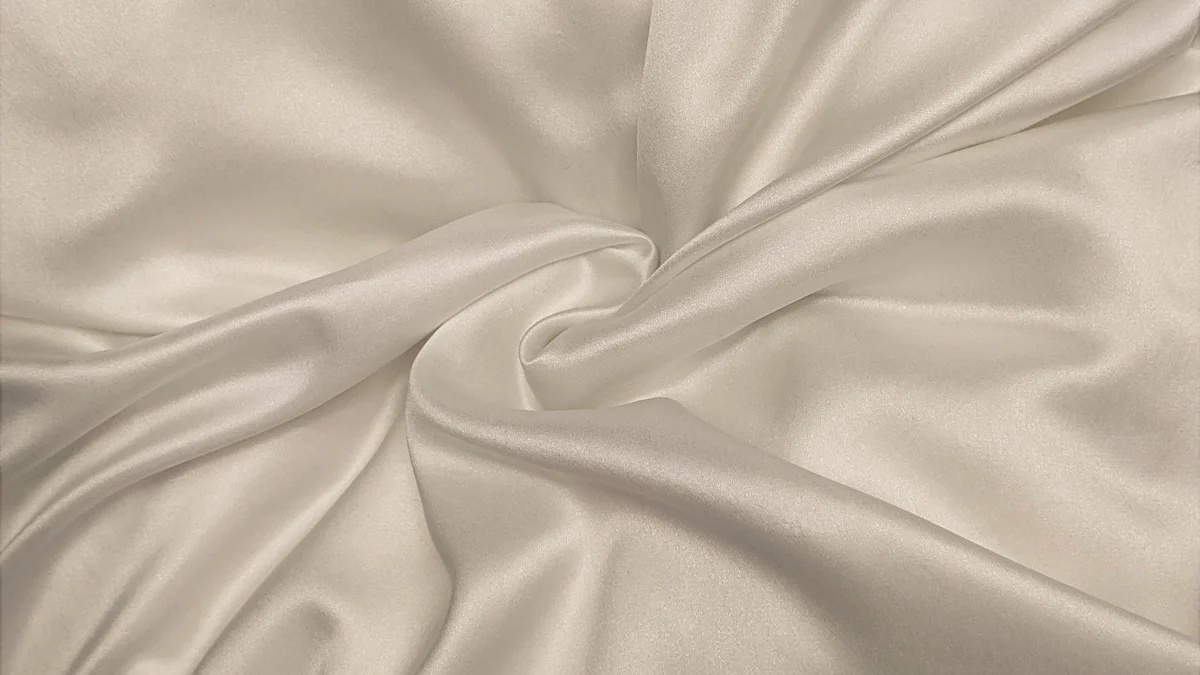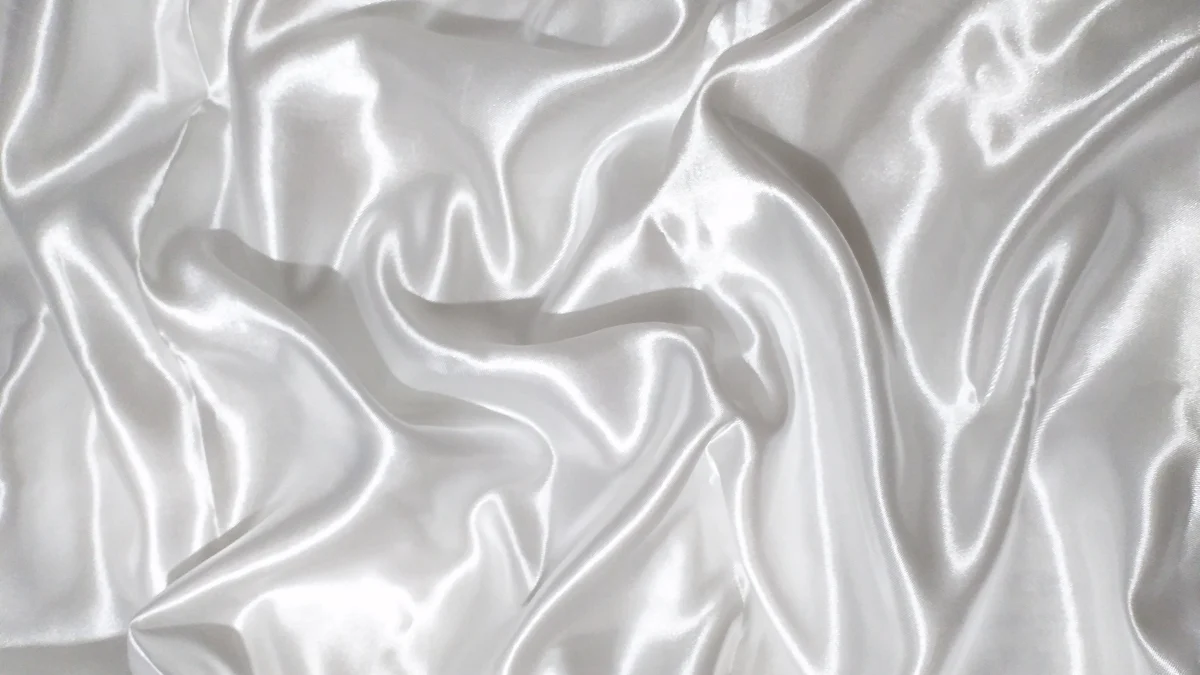
Pillowcases play a crucial role in maintaining hair and skin health. The right pillowcase can prevent breakouts, reduce friction, and keep hair hydrated. Common materials for pillowcases include silk and satin. Silk pillowcases, especially those made from mulberry silk, offer numerous benefits. Satin pillowcases, often made from synthetic materials, also provide certain advantages. This blog will explore why a grey silk pillowcase might be a better choice over satin.
Understanding the Materials

What is Silk?
Origin and Production
Silk originates from the cocoons of silkworms. China leads the world in silk production. The process involves harvesting the cocoons and extracting the natural fibers. These fibers undergo spinning into threads, which are then woven into fabric. This meticulous process results in a luxurious and durable material.
Characteristics of Silk
Silk boasts several remarkable characteristics:
- Strength: Silk ranks as one of the strongest natural fibers.
- Durability: Silk pillowcases can last for years with proper care.
- Shine: Silk has a natural luster that adds elegance to any bedroom decor.
- Breathability: Silk allows air to circulate, keeping the sleeper cool.
- Hypoallergenic: Silk resists dust mites and other allergens, making it ideal for sensitive skin.
What is Satin?
Origin and Production
Satin refers to a specific type of weave rather than a type of fabric. Manufacturers often use synthetic materials like polyester to create satin. This weaving technique produces a smooth, glossy surface on one side and a duller texture on the other. Satin’s production costs less compared to silk, making it a more affordable option.
Characteristics of Satin
Satin offers its own set of unique features:
- Affordability: Satin costs less to produce than silk, making it budget-friendly.
- Flexibility: Satin feels more flexible and supple due to its weave.
- Texture: Satin has a smoother surface compared to many other synthetic fabrics.
- Shine: Satin also possesses a glossy finish, though not as lustrous as silk.
- Versatility: Satin can be made from various materials, offering different levels of quality and price points.
Understanding these materials helps in making an informed choice between silk and satin pillowcases. Both have their advantages, but silk often stands out for its superior qualities and benefits.
Comparative Analysis
Cost
Price Range for Silk Pillowcases
Silk pillowcases, especially those made from mulberry silk, tend to be more expensive. The production process involves harvesting natural fibers from silkworms. This meticulous method results in a luxurious product. Prices for silk pillowcases generally range from $30 to $90. Higher-end options can exceed $100, reflecting the quality and craftsmanship involved.
Price Range for Satin Pillowcases
Satin pillowcases offer a more budget-friendly option. Manufacturers often use synthetic materials like polyester to create satin. This reduces production costs. Prices for satin pillowcases typically range from $10 to $30. The affordability makes satin an attractive choice for those seeking a cost-effective solution.
Care and Maintenance
How to Care for Silk Pillowcases
Caring for silk pillowcases requires gentle handling. Hand washing with mild detergent ensures longevity. Avoid using bleach or fabric softeners. Air drying is preferable to maintain the fabric’s integrity. For machine washing, use a delicate cycle and place the pillowcase in a mesh laundry bag. Ironing on a low setting helps retain the smooth texture.
How to Care for Satin Pillowcases
Satin pillowcases are easier to maintain. Machine washing with regular detergent suffices. Use a gentle cycle to prevent damage. Satin can withstand higher temperatures during washing compared to silk. Air drying or tumble drying on a low setting works well. Satin pillowcases require less meticulous care, making them convenient for everyday use.
Benefits for Hair
Silk Pillowcases and Hair Health
Silk pillowcases provide numerous benefits for hair health. The natural fibers reduce friction, preventing hair breakage and split ends. Silk’s breathability helps maintain moisture levels, keeping hair hydrated. Curly hair especially benefits from silk’s smooth surface, reducing frizz and tangles. Silk’s hypoallergenic properties also make it suitable for sensitive scalps.
Satin Pillowcases and Hair Health
Satin pillowcases also offer advantages for hair. The smooth surface reduces friction, similar to silk. This helps prevent tangles and frizz. Satin’s affordability makes it accessible for those looking to improve hair health without a significant investment. While not as breathable as silk, satin still provides a comfortable sleeping experience.
Benefits for Skin
Silk Pillowcases and Skin Health
Silk pillowcases provide numerous benefits for skin health. The natural fibers in silk help reduce friction, which minimizes skin irritation and redness. Silk’s hypoallergenic properties make it an excellent choice for individuals with sensitive skin or allergies. The breathability of silk allows air to circulate, keeping the skin cool and preventing excessive sweating. Silk pillowcases also help retain the skin’s natural moisture, reducing dryness and promoting a hydrated complexion. Many dermatologists recommend silk pillowcases for their ability to reduce the appearance of fine lines and wrinkles.
Satin Pillowcases and Skin Health
Satin pillowcases also offer advantages for skin health. The smooth surface of satin reduces friction, helping to prevent skin irritation and breakouts. Satin’s affordability makes it accessible for those looking to improve skin health without a significant investment. Satin pillowcases can be made from various materials, including synthetic fibers, which may not be as breathable as silk. However, satin still provides a comfortable sleeping experience and can help maintain the skin’s moisture levels. Satin pillowcases are a good option for those seeking a budget-friendly alternative to silk.
Durability and Longevity
Lifespan of Silk Pillowcases
Silk pillowcases are known for their durability and longevity. The strength of natural silk fibers ensures that silk pillowcases can last for years with proper care. Hand washing with mild detergent and air drying helps maintain the integrity of the fabric. Silk pillowcases resist wear and tear better than many other materials. Investing in a high-quality silk pillowcase can provide long-term benefits for both hair and skin health.
Lifespan of Satin Pillowcases
Satin pillowcases, while more affordable, may not offer the same level of durability as silk. The synthetic fibers used in many satin pillowcases can break down over time, especially with frequent washing. Satin pillowcases require less meticulous care, making them convenient for everyday use. Machine washing on a gentle cycle and air drying can extend the lifespan of satin pillowcases. However, satin pillowcases may need to be replaced more frequently than silk pillowcases due to their lower durability.
Specific Features of Grey Silk Pillowcases

Aesthetic Appeal
Why Choose Grey?
A grey silk pillowcase offers a timeless and versatile look. Grey complements various color schemes, making it a popular choice for many. The neutral tone of grey exudes sophistication and elegance. Grey also provides a calming effect, promoting a restful sleep environment.
Matching with Bedroom Decor
A Grey silk pillowcase easily blends with different bedroom decors. The neutral shade pairs well with both modern and traditional styles. Grey harmonizes with bold colors and muted tones alike. This flexibility allows for effortless integration into existing decor themes.
Additional Benefits
Hypoallergenic Properties
A grey silk pillowcase boasts hypoallergenic properties. Silk resists dust mites and other allergens, making it ideal for sensitive skin. The natural fibers in silk reduce the risk of irritation and allergies. This feature ensures a healthier sleeping environment.
Temperature Regulation
Silk excels in temperature regulation. A grey silk pillowcase allows air to circulate, keeping the sleeper cool. Silk’s breathability prevents overheating during the night. This quality promotes a comfortable and uninterrupted sleep.
Choosing between grey silk pillowcases and satin pillowcases requires careful consideration. Silk offers superior breathability, hypoallergenic properties, and durability. Satin provides affordability and ease of maintenance.
For those prioritizing luxury, hair and skin health, and longevity, silk remains the best choice. Satin suits budget-conscious individuals seeking a smooth, comfortable surface.
Personal needs and preferences should guide the final decision. Both materials offer unique benefits, but silk often stands out for its exceptional qualities.
Post time: Jul-11-2024
